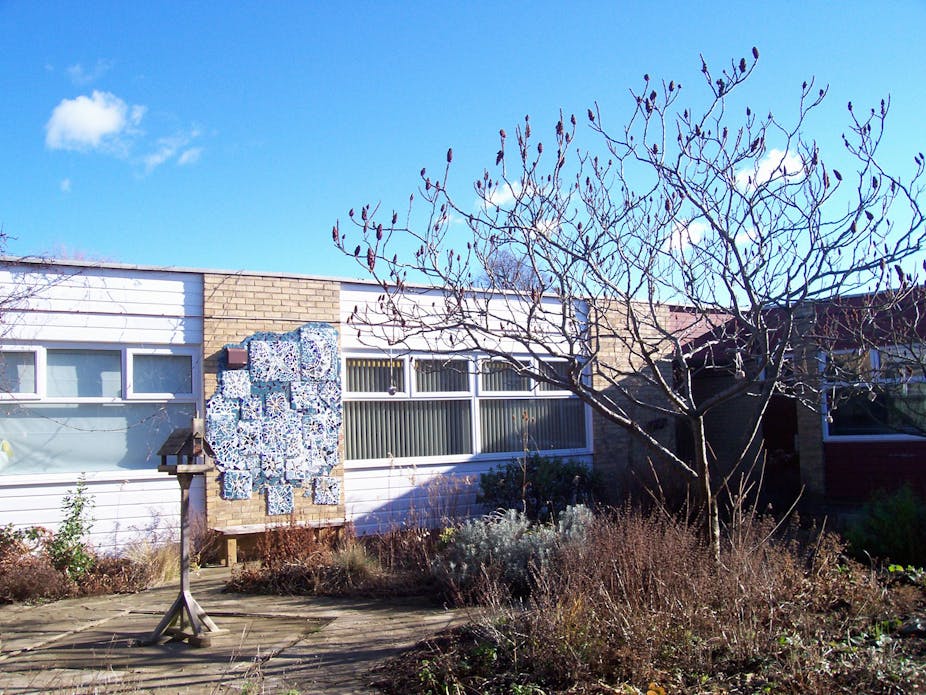The government’s announcement of a second phase of its Priority School Building Project demonstrates a commitment to around £2 billion of capital investment in the UK’s school stock. But it also reveals distinctly mixed understandings of the impact that the physical learning environment has on education. It’s important that pupils, teachers and other staff are involved in making decisions about the buildings where they spend their time.
Fortunately, the Department for Education has understood one key message from the debate that surrounded the previous government’s Building Schools for the Future (BSF) programme: that there are clear negative consequences of inadequate school buildings.
Studies have revealed correlations between measures of school building quality with various student outcomes, including behaviour, attendance and attainment. In addition, and importantly, more focused research has found direct effects on learning of specific physical problems including noise, high and low temperatures, poor air quality and limited learning space.

I have also carried out research that suggests, perhaps not surprisingly, how a poor school environment might contribute to a spiral of decline. This can involve declining student attitudes, increases in poor behaviour, reduced well-being and attendance, lowered staff morale and difficulties in staff retention. Overall, it is easier to find evidence for the negative effects of a poor educational environment than it is to demonstrate the positive effects of superior school premises.
No one-size fits all solution
Yet the danger of this way of thinking about the issue is that we find ourselves imagining we can all agree on what makes a suitable learning environment and build it, just by making good any obvious deficiencies. This is a trap; if we fall into it, we risk ignoring the human side of educational environments, and also over-simplifying the physical side.
The research that reveals the effects of specific problems does not provide priorities for fixing them, and sometimes the solutions may even be in conflict. For example, increasing ventilation to improve air quality, either mechanically or by opening the window, may well also increase noise.
The balance of cost and benefit will hinge on the particular circumstances of the school. For some schools, increasing learning space might be a cheap and relatively quick fix while for others, such as schools on restricted urban sites, this might be almost impossible.
As I pointed out in a review of this area some years ago, there is no metric for comparing the benefits of improved physical infrastructure with other possible ways of spending the same money, such as on staff or resources.

This awareness of the complexity of any educational environment makes sense of occasions when an apparently unexceptional school setting supports excellent education. Instead, it is often a matter of matching premises to needs.
Although no learner or teacher needs a leaky roof, the suitability of other aspects depend on what you want to do in your classroom. If the preferred teaching style is to teach the whole class at once, then the teacher needs to be visible and audible to all learners. Seating then in small groups may be counter-productive. Alternatively, a school that values speaking skills and learner discussion might be noisy at times.

Of course, one way to enhance the match between educational setting and proposed activities is to change the setting to make it more appropriate. This is something that individual teachers do on a small scale: rearranging furniture for group work, organising resources to be accessible, maximising the carpet space to use for learning games and debates.
Effective schools use space wisely
Some studies of effective schools suggest that a willingness to engage with the school environment can contribute to their “can-do” ethos. This goes beyond individual teachers organising their own classrooms and seems to involve the school community pulling together to make their premises work for them, enabling effective learning and social practices.
Such a dynamic was noticed nearly four decades ago in a classic piece of British research, but has been remarked upon in a much more recent study of school performance in the US state of Virginia. 80 schools were surveyed, revealing the expected associations between school quality and educational outcomes. Notably, the researchers found that aspects that were under the schools’ control, such as cleanliness, were as important as design elements.
Case studies of two surprisingly successful schools in economically deprived areas in Virginia showed how the members of these school communities had made good use of the premises to enhance teaching and learning.
Getting involved

This all implies a necessity of actively involving school users in any redesign or rebuilding. This is because there is no ideal school: the building must fit the users’ needs and they will need to think collaboratively about exactly what those needs are. Interestingly, the Building Schools for the Future programme explicitly included ideas about participation with attempts made to involve learners, school staff and the wider community in design processes.
Worryingly, this is being determinedly left out of the new funding arrangements. The James review levelled specific criticism at the participation attempted during the Building Schools for the Future era, because the process could be lengthy and challenging.
So it’s difficult – but that does not negate the need to do it. Ironically, there is a growing awareness within architecture of the benefits of user participation in design. Within the related discipline of planning, participatory processes have been a valued and hotly pursued goal for decades .
The current school funding arrangements may be just about sufficient to sort out dilapidated school buildings, which, as I have argued, is clearly important. But as it stands, the process is ill-equipped to tackle the complexity of designing for a productive dynamic between educational space and activities. Even a “cheap” school building requires significant investment – and it might actually be more wasteful to spend public money on mere containers for education that only aspire to be physically adequate provision for average needs.

